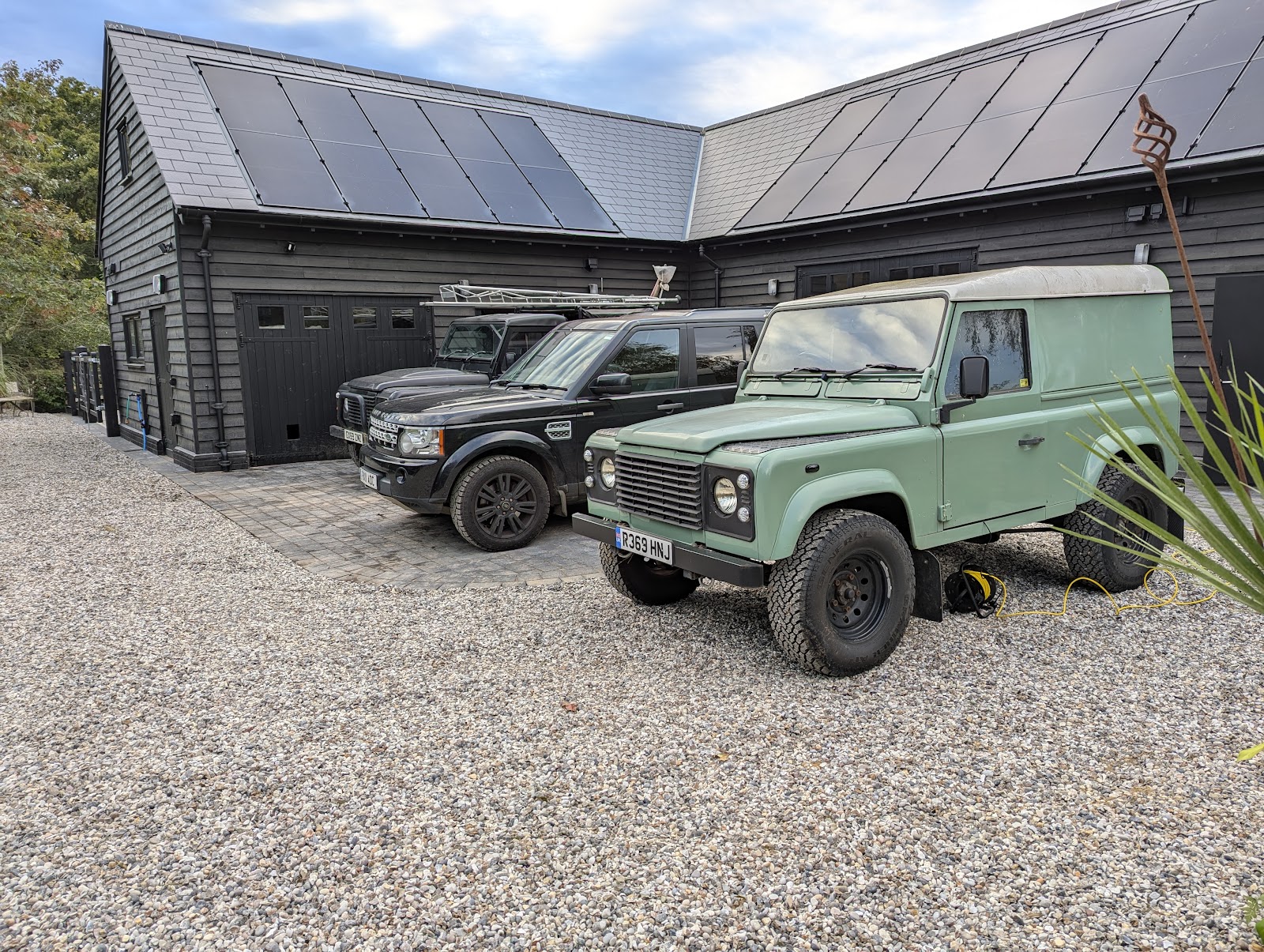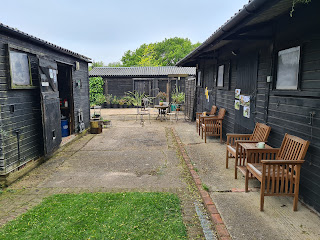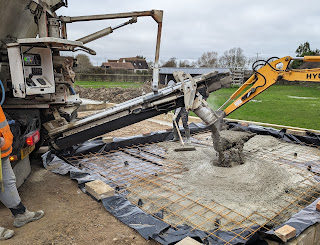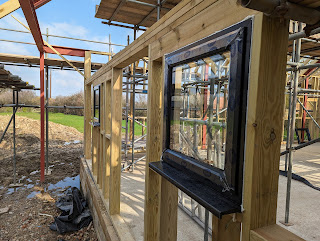Since the completion of The Shed, most of the jobs I have done in the new workshop have been for The Shed. Today was no exception, I added the ducting for extractor fans.
I didn't have any mechanical extraction in the old shed because it was draughty enough not to need any extra ventilation. The new workshop is pretty much sealed with only the deliberate window vents providing a trickle of air. This was OK in the summer where I had the doors and windows open but as soon as I've started working with those closed it was obvious I needed to add an extractor fan.
This was always planned and a section of wall had extra noggins in to form the duct and power was in place ready for an extractor fan.
What was causing me to think, was the vent on the outside. As The Shed is clad in feather edge, the boards overlap and are at an angle. Any of the more attractive cowls would not fit over the boards. This limits the design to a thin rectangle. I didn't like any of the off the shelf options.
After experimenting with a few things I ended up with using a length of guttering. It appears to work and blends in to the point of being almost unnoticed.
Behind the gutter cowl is a rectangular duct joint incorporating a backdraught flap. I added a few holes for better sideways airflow. Inside I've covered the duct with a bit of fly screen mesh.
The duct size is a bit small for the size of fan I've fitted but it's doing the job I need.
While I was at it, I've used the same design for a dedicated duct for my worktop spray booth.
==























































































































